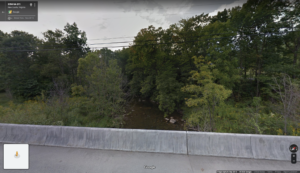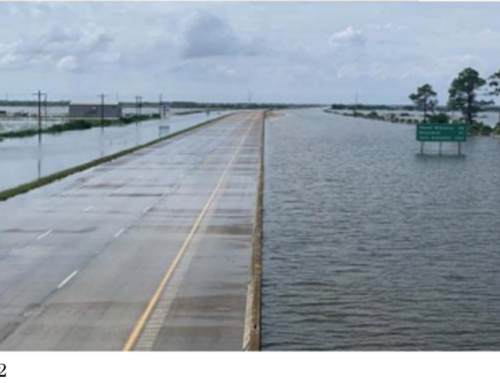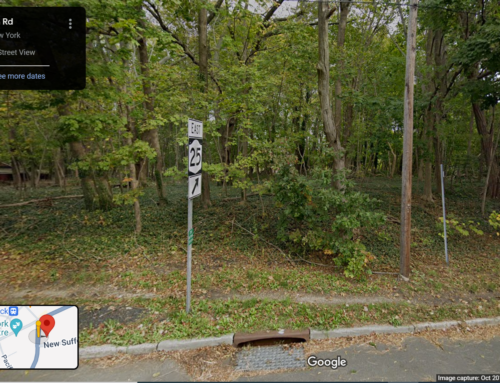
Chances are, you’ve never heard of Craig’s Creek. It’s a small stream—barely a trickle when compared to the creeks in eastern Virginia—nestled in the mountains of Craig County. It serves as a tributary of the James River and as a venue for kayakers but not much else. It is crossed by a few road bridges and powerlines, but those seem relatively uncontroversial. Despite this seeming lack of use, a pair of landowners are suing the Virginia Marine Resources Commission, the state agency that regulates state-owned submerged land, in an attempt to have the submerged land beneath portions of the creek declared to be privately owned. The suit highlights the tangled law surrounding submerged land ownership in Virginia.
On the surface, the law concerning ownership of such lands seems simple. By statute, the beds of the rivers and creeks throughout Virginia belong to the state government unless a special conveyance was previously made of such lands. That last proviso is the rub: while the government is prohibited from conveying fee simple interest in submerged lands now, that has not always been the case. The law on this topic was summarized in an Attorney General’s opinion dated May 3, 1982 to the then Commissioner of the VMRC. As explained therein, the rule at common law was that submerged land beneath tidal waters could not be conveyed but all other submerged lands could. After July 4, 1776, Virginia stopped following the common law rule of England and instead shifted to a modified rule in which submerged lands beneath waters that were navigable in fact could not be conveyed. Navigability is a complex factual question that examines whether a waterway is capable of being used in commerce as a highway for trade or travel. Because that test is imprecise, the agency uses an administrative test that assumes anything with a drainage area of five square miles or more is navigable. Statutory enactments subsequently prohibited the state from conveying lands under non-navigable waters. Thus, beginning in 1792, submerged lands beneath non-navigable waterways could not be granted in the eastern part of Virginia, which the attorney general assumes to be that part of the state that drains toward the Atlantic Ocean, or after 1802 in the western part of the state, which the Attorney General assumes would be the part that drains toward the Gulf of Mexico.
Unfortunately, land grants dating from almost three hundred years ago are not models of clarity or precision. In addition, it is often difficult to trace a current landowner’s title back to the original patents. Thus, the ownership of submerged lands, particularly those in the western part of Virginia, is often unclear.
This lack of clarity has led to conflict in the past. For instance, in Kraft v. Burr, 252 Va. 273 (1996), landowners along the Jackson River brought suit against a fishing guide to enjoin him from leading fishing trips to portions of the river that the owners claimed they owned and in which they claimed exclusive fishing privileges pursuant to a royal grant. The fishing guide argued that the landowners could not prevail because the original grants did not grant exclusive fishing privileges in the waters and because the landowners had not traced their titles back to the crown patents under which they claimed. The court rejected the guide’s claims. With regard to the necessity of tracing title, the court held that such tracing is unnecessary where the claim is one for trespass and the alleged trespasser does not have an adverse claim of ownership. In that situation, the owner must merely show prima facie evidence of title—which consisted in that case of a royal patent that included the land at issue—coupled with their possession. It then fell to the trespasser to rebut that prima facie evidence by showing a better title in himself or another person under whom he claims.
Of course, this shortcut would not work in litigation against the Commonwealth, as Virginia would be claiming title. This brings us back to Craig County. Back in 2016, a state senator requested a ruling from the commissioner of the Virginia Marine Resources Commission about whether certain named watercourses were navigable. The commissioner declined to make such a ruling, instead noting in his letter that the agency does not make such determinations. He also noted that each of the named watercourses met the administrative test developed by the agency described above.
Apparently upset by this, a group of landowners who owned land along one of the watercourses named in the letter—John’s Creek in Craig County—filed a declaratory judgment suit against the VMRC in Craig County Circuit Court. In it, they alleged, among other things, that the commissioner’s letter constituted a taking of their property under federal and state law, violated § 25.1-417, and created a cloud on their title. They specifically alleged that, after the letter, kayakers had been floating down the allegedly privately-owned creek and that the local prosecutor had stopped prosecuting them for criminal trespass. Despite the fact that, under Kraft, they could have sued those boaters for civil trespass and faced an easier evidentiary burden, they sued the state. Attorneys for the commission filed a demurrer to the suit, but the demurrer was never heard because the plaintiff who was the driving force behind the suit died. At the request of the remaining landowners, the attorney representing them withdrew the suit and declared to the press that, had the suit continued, he was confident that he would have won.
Earlier this year, the attorney got his chance. Another group of landowners hired the attorney to sue the VMRC again, this time over ownership of Craig’s Creek in Craig County. Of course, the landowners could not point to a letter or other action on behalf of the agency that seized their lands. Instead, they pointed to language in a guidance document published by the agency that states that the agency exercises jurisdiction over submerged lands throughout the Commonwealth and that the jurisdiction is premised on the Commonwealth’s ownership of those lands to claim that the agency was claiming ownership of their land. They again claimed that the agency had seized their land in violation of state and federal constitutional protections, violated § 25.1-417, and created a cloud on their title. They sought a declaratory judgment that they owned the land beneath Craig’s Creek, among other relief.
Once again, attorneys for the VMRC filed a demurrer. In it, they argued that, among other things, the landowners had failed to state a claim for a declaratory judgment because they had not identified a justiciable controversy. In other words, because the agency is not disputing their ownership at this stage—and the landowners are not proposing to do anything with the property that they could not do without such a declaration—the landowners are seeking an advisory opinion, which is not permissible under the Declaratory Judgment Act. Other problems with the plaintiffs’ suit include the fact that the agency has not been delegated the power of eminent domain and thus cannot “seize” the plaintiffs’ land, the statute they claim the Commission violated explicitly states that it “create[s] no rights or liabilities,” and an unrecorded document cannot create a cloud on title.
The plaintiffs responded to the demurrer by pointing to the case of Commonwealth v. Morgan, 225 Va. 517 (1983) as an instance in which suits similar to theirs were allowed to proceed to trial. However, in the Morgan case, there was a dispute about the use of submerged lands—the VMRC was attempting to charge the landowners a royalty for their use of the submerged lands at issue to store oyster shells and for a bulkhead built on it. The VMRC was also attempting to lease a portion of the land to an oyster planter. As noted above, no such dispute exists here.
The demurrer was heard on August 29. To the surprise of many, and despite the flaws in the plaintiffs’ case pointed out by the defendant agency, the court overruled the demurrer in full and is allowing the case to proceed to trial. The trial is scheduled for February 7 and 8, 2023.
Matt Hull is a Pender & Coward attorney focusing his practice on eminent domain/right of way, local government, and waterfront law matters.
Disclaimer
The materials on this web site have been prepared by Pender & Coward, P.C., for informational purposes only and are not legal advice. This information is not intended to create, and receipt of it does not constitute, a lawyer-client relationship. Internet subscribers and online readers should not act upon this information without seeking professional counsel. Do not send us information until you speak with one of our lawyers and get authorization to send that information to us. Information sent without prior authorization may not be protected as a privileged and confidential attorney-client communication.







Leave A Comment